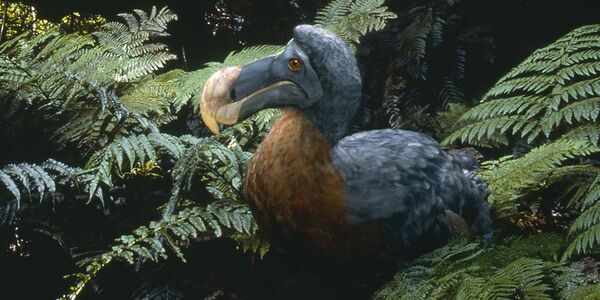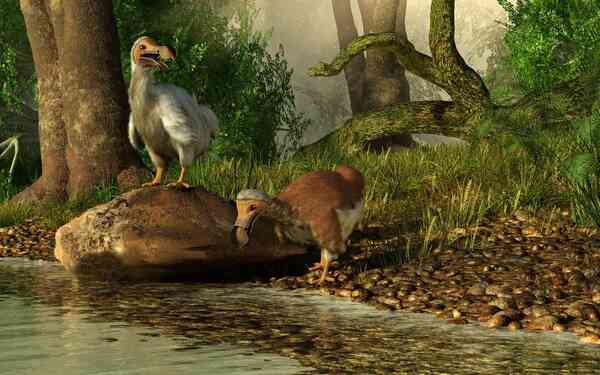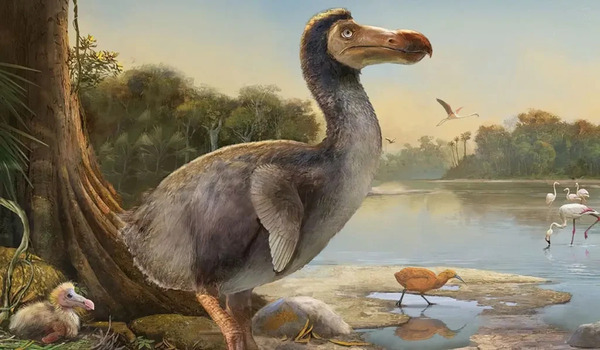The extinction of the dodo bird is a powerful example of how human actions can dramatically affect a species. Native to the island of Mauritius, dodos faced several threats that ultimately led to their downfall.

The dodo (scientific name: Raphus cucullatus) was a large, flightless bird found only on Mauritius. The origin of its name is debated; some say it comes from the Dutch word "dodaars," meaning "stumpy tail," while others suggest it derives from the Portuguese word "doido," meaning "fool."
Dodos thrived in the lush, tropical environment of Mauritius. They mainly fed on fruits, seeds, and nuts from the tambalacoque tree, as well as roots and small insects. With no natural predators, dodos laid their eggs directly on the ground. This became a problem when humans and their domesticated animals arrived on the island.
Dodos stood about three feet tall and weighed between 15 to 20 kilograms. They were covered in brownish-grey feathers, though the exact shade is still a matter of debate. Their beaks were about eight inches long, curved at the tip, and strong enough to break open coconuts. Despite often being depicted as clumsy and lazy, this perception may have stemmed from their lack of familiarity with humans.
While some historical accounts suggest that Arab explorers visited Mauritius before the 16th century, the first documented sighting of the dodo was by Dutch East India Company sailors in 1601. The first illustration of the bird appeared soon after.
The dodo's extinction by the late 17th century can be traced to three main factors:
Arrival of Humans: Before humans arrived, dodos had no natural predators. Their inability to escape from new threats made them easy targets for sailors, who hunted them extensively.
Invasive Species: Invasive animals, such as rats, cats, dogs, and pigs, were brought to the island by humans. These animals preyed on dodo eggs and young chicks, putting additional pressure on the already vulnerable population.
Habitat Destruction: Human exploration led to the destruction of natural habitats as forests were cleared for agriculture and other purposes. This loss of habitat affected not just dodos, but many other unique species on the island.

In retrospect, the dodo might have survived if it had lived in environments with natural predators or if humans had been more focused on conservation. If the dodo had been introduced to other areas or if humans had chosen to protect rather than exploit it, perhaps it would still be around today.
Ultimately, the dodo serves as a poignant reminder of the impact humans can have on wildlife and underscores the importance of conservation efforts to prevent further extinctions.
The dodo, a unique, large, flightless pigeon from Mauritius, has become a symbol of extinction. Often misunderstood as a silly creature, the truth is that the dodo was well-adapted to its island environment. Unfortunately, human actions led to its demise.

When sailors first reached Mauritius, they found dodos unafraid, as the birds had evolved without natural predators. This naivety made them easy targets; sailors clubbed them for food, leading to a rapid decline in their population. Alongside hunting, habitat destruction from sugar plantations and competition from introduced species like rats and pigs worsened their fate. By the late 17th century, the dodo had vanished.
Dodos likely feasted on fruits, seeds, and possibly shellfish found on the beach. They also swallowed stones, known as gastroliths, to aid in digestion.
Dodos descended from smaller pigeons and gradually lost their ability to fly as they adapted to a predator-free environment. Over time, they evolved into larger birds, making flight unnecessary.
Though often compared to chicken, sailors described dodo meat as tough and unpleasant, even labeling it "repulsive." This negative reputation contributed to their poor image.
The dodo’s unfortunate nicknames reflect misconceptions about its nature. Dutch sailors called it “dodaersen” (fat-arses) and “walchvögel” (repulsive bird), while the famous biologist Carl Linnaeus labeled it Didus ineptus, believing it to be clumsy.
Dodos stood about a meter tall and weighed roughly as much as a cocker spaniel. They had greyish-brown feathers, a large curved beak, and a stout body, perfectly suited for their island lifestyle.
Excitingly, American biotech company Colossal Biosciences is exploring the possibility of bringing the dodo back to life, following efforts to resurrect the woolly mammoth and Tasmanian tiger. Until then, you can view a dodo skeleton at Oxford’s Natural History Museum, serving as a reminder of our impact on nature.
While dodos may be gone, their story continues to spark curiosity and scientific exploration!
animal tags: Dodo-Bird
We created this article in conjunction with AI technology, then made sure it was fact-checked and edited by a Animals Top editor.